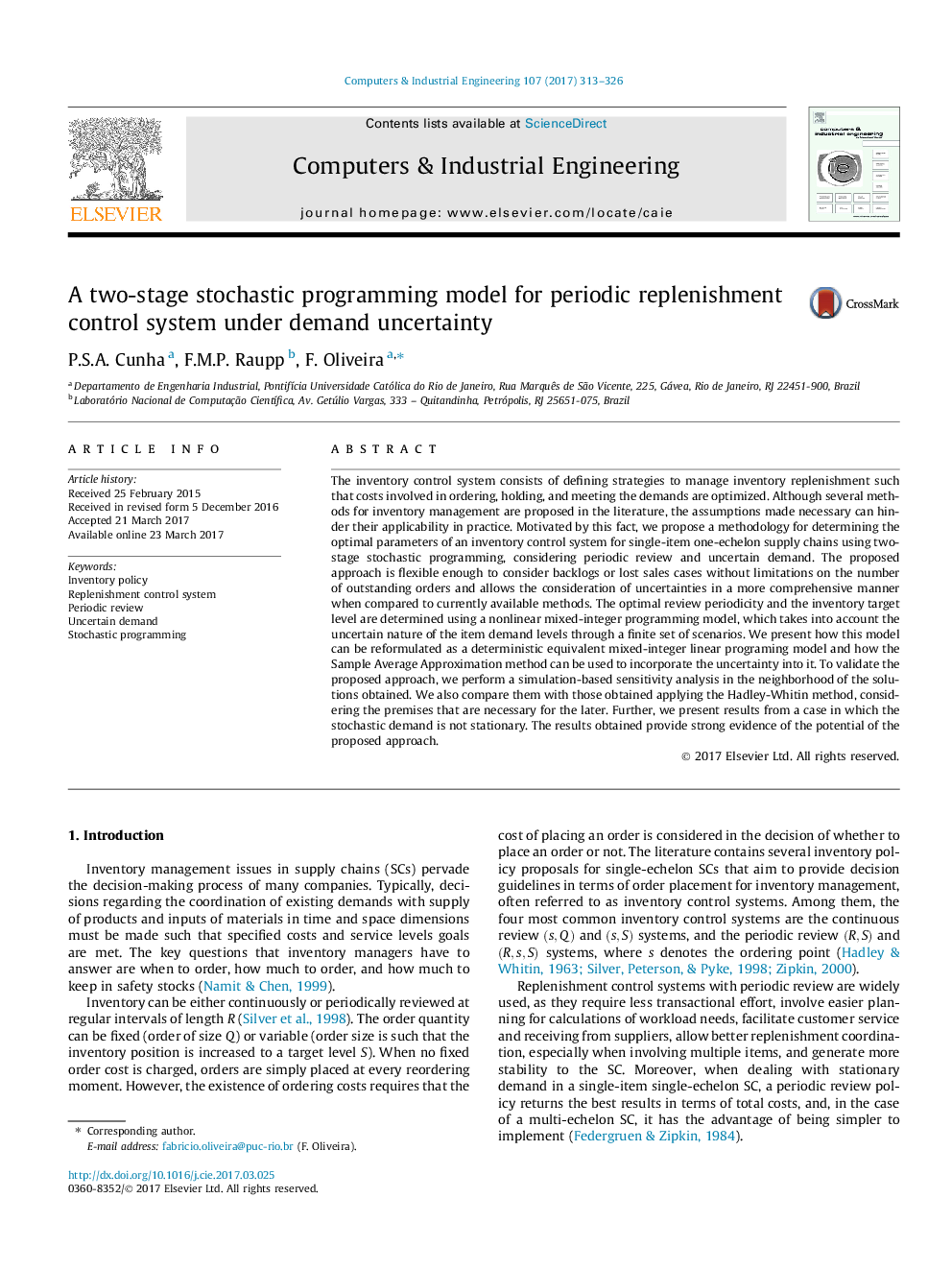ترجمه فارسی عنوان مقاله
یک مدل برنامه ریزی تصادفی دو مرحله ای برای سیستم کنترل مجدد دوره ای تحت عدم اطمینان تقاضا
عنوان انگلیسی
A two-stage stochastic programming model for periodic replenishment control system under demand uncertainty
| کد مقاله | سال انتشار | تعداد صفحات مقاله انگلیسی |
|---|---|---|
| 88733 | 2017 | 14 صفحه PDF |
منبع

Publisher : Elsevier - Science Direct (الزویر - ساینس دایرکت)
Journal : Computers & Industrial Engineering, Volume 107, May 2017, Pages 313-326
ترجمه کلمات کلیدی
سیاست انبارداری، سیستم کنترل اضافی مرور دورهای، تقاضای نامعلوم، برنامه ریزی تصادفی،
کلمات کلیدی انگلیسی
Inventory policy; Replenishment control system; Periodic review; Uncertain demand; Stochastic programming;
ترجمه چکیده
سیستم کنترل موجودی شامل تعریف استراتژی برای مدیریت دوباره پر کردن موجودی است تا هزینه های مربوط به سفارش، نگهداری و رسیدگی به خواسته ها بهینه شود. اگر چه چندین روش برای مدیریت موجودی در ادبیات ارائه شده است، فرضیه هایی که لازم است می توانند کاربرد آنها را در عمل مانع شوند. با توجه به این واقعیت، ما پیشنهاد روش شناسی برای تعیین پارامترهای مطلوب یک سیستم کنترل موجودی برای زنجیره های عرضه تک تک تکین را با استفاده از برنامه ریزی تصادفی دو مرحلهای، با توجه به بررسی دوره ای و تقاضای نامطلوب پیشنهاد می کنیم. رویکرد پیشنهادی به اندازه کافی انعطاف پذیری را برای بررسی عقاید و موارد فروش از دست داد بدون محدودیت تعداد سفارشات برجسته و امکان بررسی دقیق تر در مقایسه با روش های در حال حاضر امکان پذیر است. مقیاس بهینه بررسی و سطح هدف موجودی با استفاده از یک مدل برنامه نویسی یکپارچه غیرخطی غیر خطی تعیین می شود که با توجه به ماهیت نااطمینی سطوح تقاضای اقلام از طریق مجموعه ای از سناریوهای محدود، مورد توجه قرار می گیرد. ما در حال حاضر چگونه این مدل را می توان به عنوان یک مدل برنامه ریزی خطی معادل مخلوط عددی قطعی و چگونگی استفاده از روش میانگین تقریبی نمونه برای قرار دادن عدم اطمینان در آن را اصلاح کرد. برای اعتبارسنجی رویکرد پیشنهادی، ما یک تحلیل حساسیت مبتنی بر شبیه سازی در محدوده راه حل های به دست آمده را انجام می دهیم. ما همچنین آنها را با کسانی که به دست آمده، با استفاده از روش هادلی ویتین مقایسه می کنیم، با توجه به مکان هایی که برای بعد لازم است. علاوه بر این، ما نتایج حاصل از یک مورد که در آن تقاضای تصادفی ثابت نیست. نتایج بدست آمده حاوی شواهد قوی در مورد پتانسیل رویکرد پیشنهادی است.

